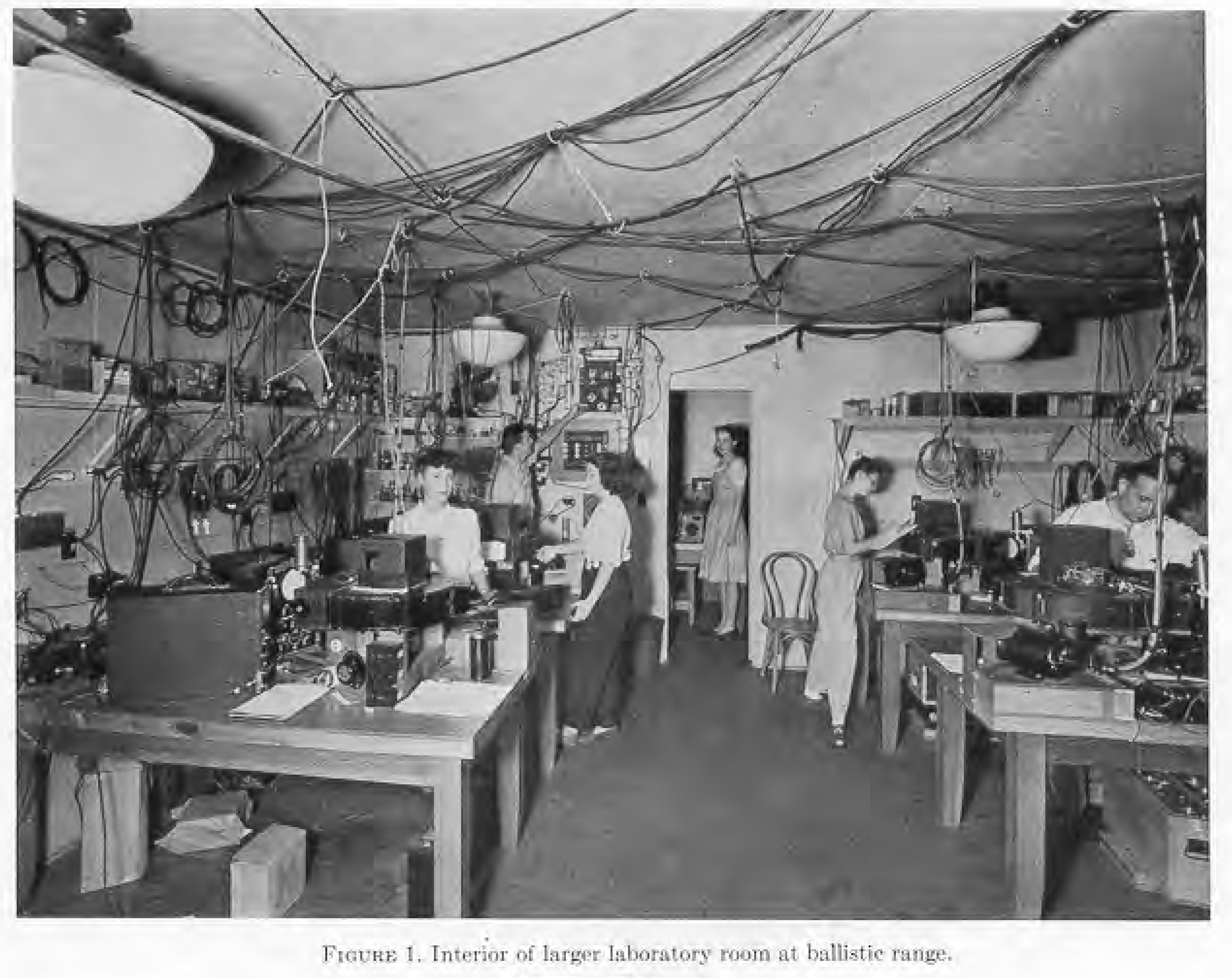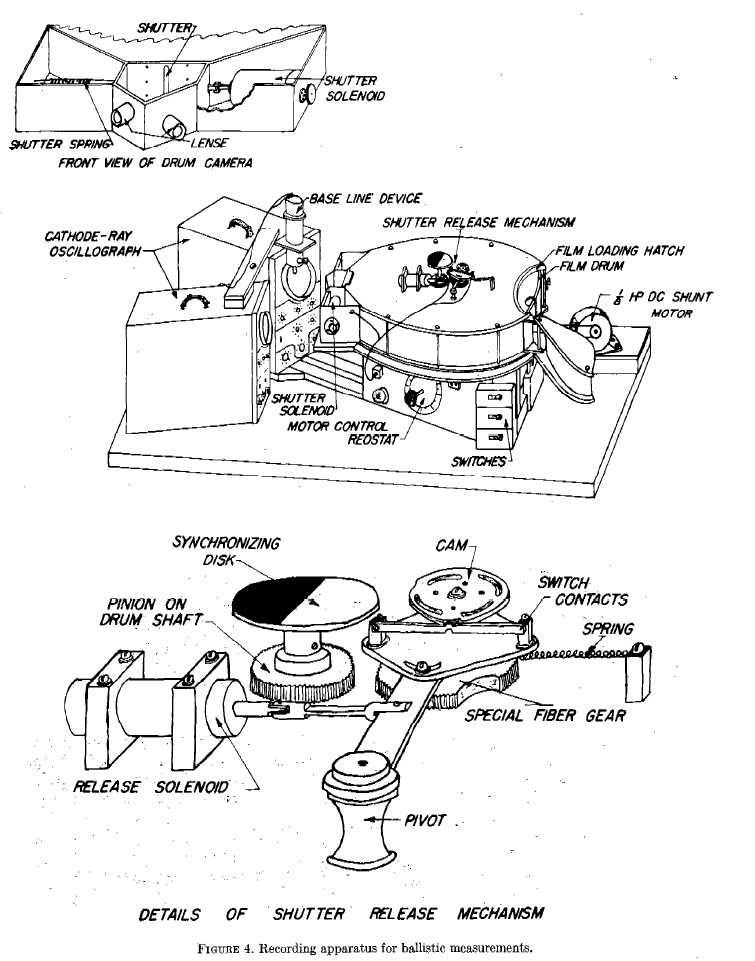Author: CaptianNemo
The T47 37mm Experimental Gun was provided by Division 1 through the Franklin Institute. The gun is essentially a modified 40mm Bofors gun (Navy Speciation) which fired a series of different projectiles using different primers and powders. Overall length was 88.58 inches.
The barrel is chromium-plated and was made by boring a 40mm(Bofors) tube for 37mm and chambering it for a standard 40mm(Bofors) cartridge case necked down to accommodate a 37mm projectile. The first gun barrel was mounted on a standard 57mm carriage and then sent off to Aberdeen Proving Grounds for testing. A second gun barrel was shipped off to Division 1 , NDRC ballistic firing range at Carderock, Maryland for ballistic tests. The second barrel failed (on round number 51) after the chromium plating failed and it was determined that the plating was too thin and it notes in the report that it was recommended that another (third) barrel be produced with the correct chromium plating thickness. The report does not say if a third barrel was produced.
The entire propose of the gun was to test pre-engraved projectiles combined with chrome plating the barrel which had been shown to extend the velocity life of the gun. The projectiles are made of Parco-Lubricated Steel which is where the surface of the projectile is treated with an Iron Phosphate coating.
The chamber volume was 31.43 cubic inches with a capacity of 29.9 cubic inches. The travel of the projectile from seating to ejection 73.96 inches(1878.584mm) another part of the source document lists projectile travel length as 76.58 inches(1945.13mm) which would produces a 50.77 calibers to 52.57 long barrel.
For test purposes the Experimental T47 was tested with a range of 37mm projectile weights from 1.34lbs to 1.92lbs. Six different projectiles in all. Out of the 12 results posted 1 is 1.92lbs and 1 is 1.34lbs the majority is 1.62lbs.For the 37-mm projectiles the velocities range from 3,260(50% Service Charge) to 3,870(100% Service Charge) fps for projectiles weighing 1.92lbs to 1.34lb. The 1.62-lb pre-engraved projectile at the muzzle had the velocity of about 3,500 fps.
The six lands for the pre-engraved projectile had a constant twist of 24 calibers per turn.(1 turn in 24 calibers although another part of the same document gives this same info as 1 in 25). The groves were 0.030 inches in depth with the lands pointed on a 30 degree slope at the origin of rifling and by changing the feed mechanism to prevent rotation of the previously indexed round. The projectile in turn had six corresponding splines pointed with a 30 degree slope to match the lands. The rounds were aligned in the case so that proper indexing of the case would automatically index the round. The case was the standard 40mm(Bofors) case, necked to fit the 37mm pre-engraved projectile. A guiding groove was cut in the base to guide the case on a vertical aligning track and an extension of this groove was cut in the edge of the flange to guide the case along a horizontal track in the tray.
For the 37mm projectiles the observed values of deceleration range from 600 ft/sec2 to 1,250 ft/sec2 depending upon the service charge used, 50% and 100%. (The range is 500 ft long and is horizontal. Concrete piers for the support of velocity ‘solenoids’ are located at 50-ft intervals along the range.) The deceleration of 3-in. projectiles on the range has been computed for each successive trio of solenoids, and for the first arid the last pair of solenoids.
Maximum pressures in the 37mm gun ranged from 52 to 64 kilopounds psi.The two powders tested in the gun were M-1 powder (low flash-intensity) and M-5 powder (high flash-intensity). On several rounds pictures of the 37mrn projectiles in flight were made about 75 ft in front of the gun by illuminating the projectile with a “microflash”.
Armor penetration is not mentioned specifically but early on in the document a ‘current gun’ is mentioned, but not named, that penetrated a 3-5/8 inch plate of Class “B” Armor at 20 degrees incidence at a velocity of 3,440 fps. Which does fits the profile of the T47 gun. To be honest the anti-armor performance is not that great compared to the 37mm LJ and 37mm APDS. Both of which will be reserved for another time.
Source of text and Photos: Summary Technical Report of Division 1, NDRC. Volume 1 Hypervelocity Guns and the Control of Gun Erosion, January 1946.











“The barrel is chromium-plated and was made by boring a 40mm(Bofors) tube for 37mm and chambering it for a standard 40mm(Bofors) cartridge case necked down to accommodate a 37mm projectile.”
How is it possible to bore the barrel to a lower calibre? I’d guess you can only refit bore the barrel to have a higher one.
I’d suppose you start with an unbored barrel that would normally be used for a 40mm, but bore a smaller hole.
Well no because a tube is already bored. What it would be is a 40mm (Bofors) stock. One bores the stock to make a barrel.
You’ll note I’m avoiding the term blank because it means something else for weaponry.
The barrel was intended for the 40mm Bofors but was pulled from the line before boring and was bored out to 37mm.
I imagine the chromium liner would have something to do with it.
Banana for scale?
Can we have some real measurement units so that we can compare them to other existing high power 37mm guns?
In WoT terms, DeMarre calculations put it around 65mm at 100 meters
Too complicated.
Any reason for publishing this? Is this topic connected to the autocannon of M5?
No, it is not related to the Auto M5.
But it is related to what was the study of high and hyper velocity guns. And it is related to two other developments in .50 caliber and 90mm that I hope to talk about in the future.
All in all, the .50cal, 37mm, and 90mm are both developmental guns and at the same time try and deal with the problems of gun erosion. Because of the difficulties of gun erosion and the refusal of various departments to accept anything less then perfection the US really didn’t end up with a hyper velocity gun until post WW2. That is to say they did not want to accept a gun that could only fire a handful of rounds through its barrel before being toast.
The 75mms on the M10s for instance, despite being a much lower MV could handle 10k rounds before needing a barrel change. The scary thing is new barrels had to be shipped to Italy to replace the old ones because they had all fired some 10k plus rounds of HE in combat.
The gun is basically only one step in a series of trying to make a long lasting hypervelocity gun. Which took years. The British alone spent 10 years, post ww2, perfecting the chrome lining of their 105mm and 120mm guns. Because it tended to wear off the barrel in just a few shots.